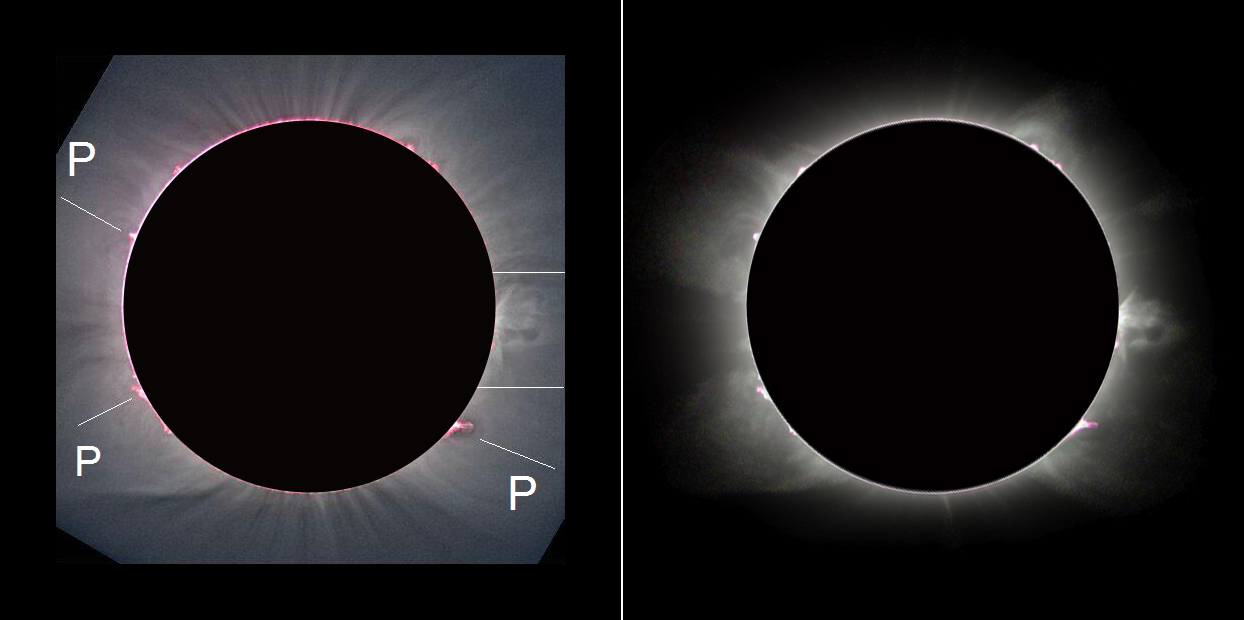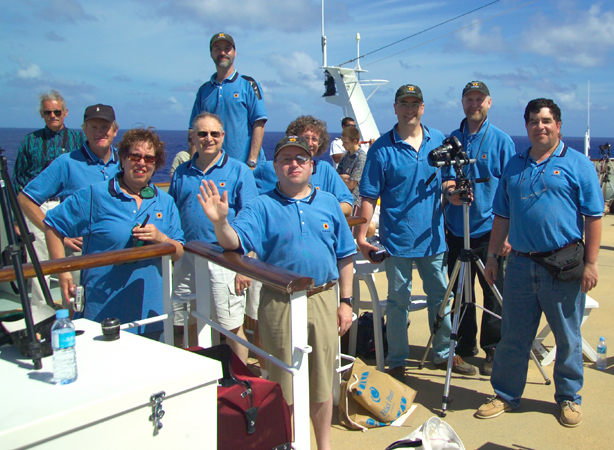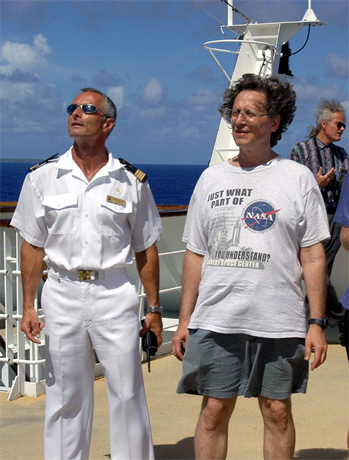
Assessing the cloud/wind conditions at ~ CII - 90 minutes.
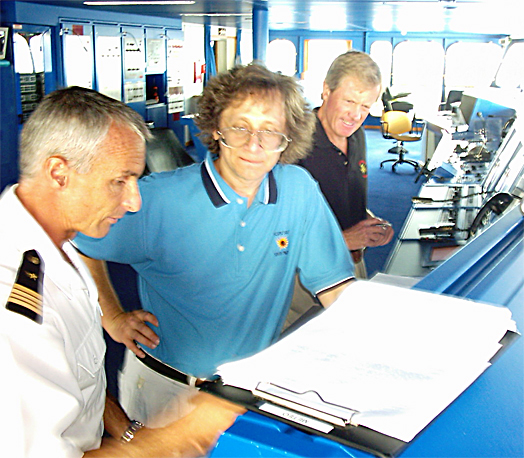
Pre-eclipse planning on the bridge.
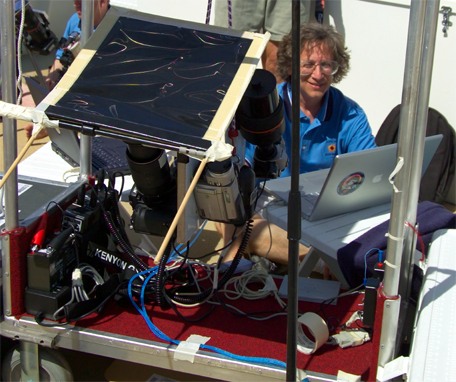
Gyro platform with 2 film and video cameras showing.
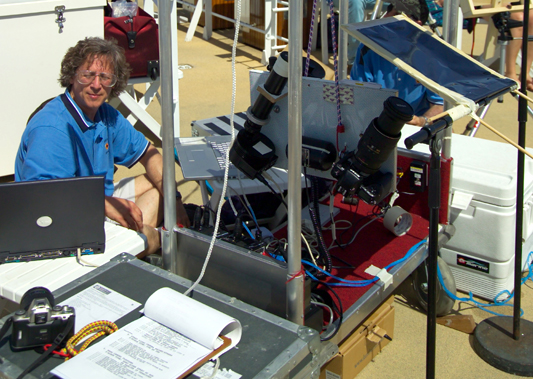
Gyro platform with chilled-water
cooled SBIG CCD camera showing.
 Assessing the cloud/wind conditions at ~ CII - 90 minutes. |
 Pre-eclipse planning on the bridge. |
 Gyro platform with 2 film and video cameras showing. |
 Gyro platform with chilled-water
cooled SBIG CCD camera showing.
|
| Very
sadly, and unexpectedly, I am sorry to say that soon after
Bill's
kind offer, I learned from Nina, Bill’s wife, that Bill died on 11
October 2005 due to complications arising from acute leukemia.
This
was, to say the very least, quite a shock. Though I had only met Bill
for the first time during our recent travels to the South Pacific, it
was quite clear to me that his passion for solar eclipses was very deep
indeed. I had looked forward, following our too-brief
post-eclipse
communications, to fostering a collegial relationship which would have
brought us together in future eclipses – which of course will now never
happen. Nina had passed along to me that “he was so thrilled that
you
guys {myself and Alex Filippenko} liked his South Pacific eclipse
pictures. Other people had told them they were quite
impressed...” My
admiration for his work was very justly deserved, and I hope I had
really adequately expressed that to him. |
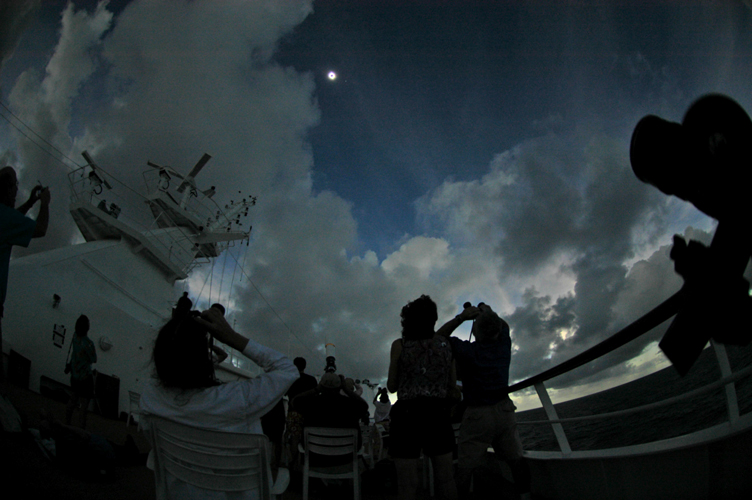
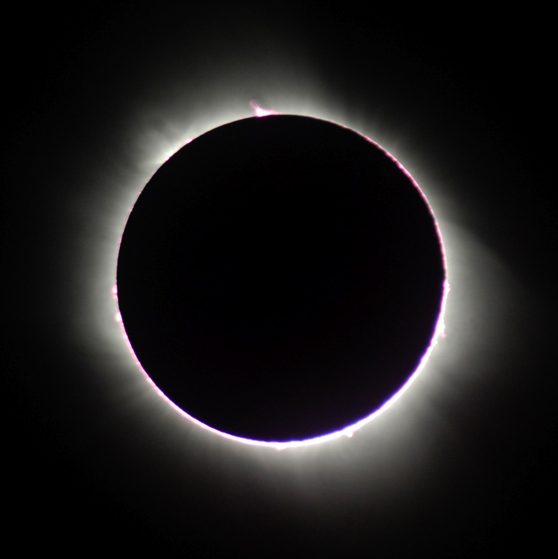 |
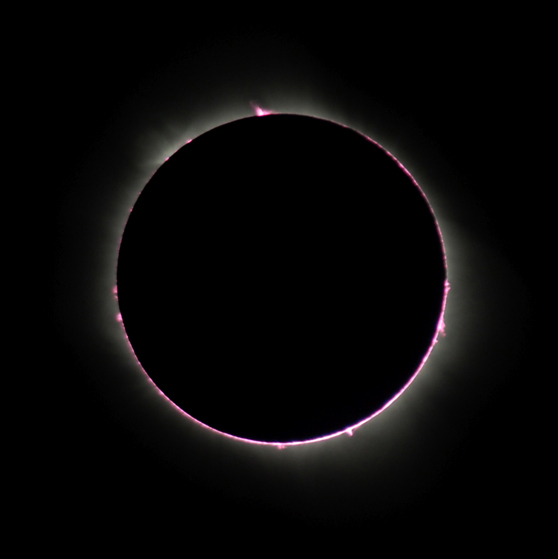 |
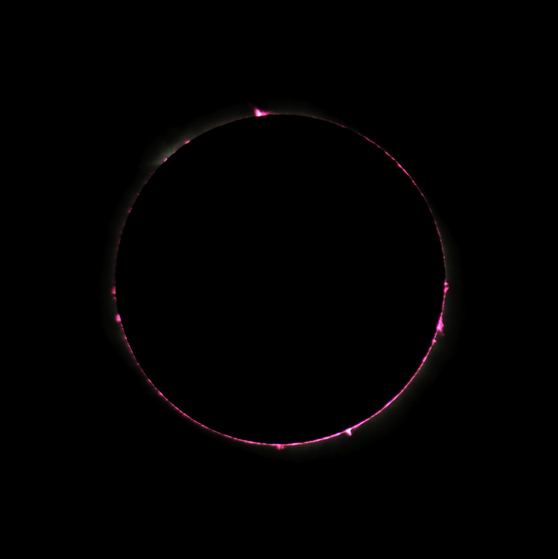 |
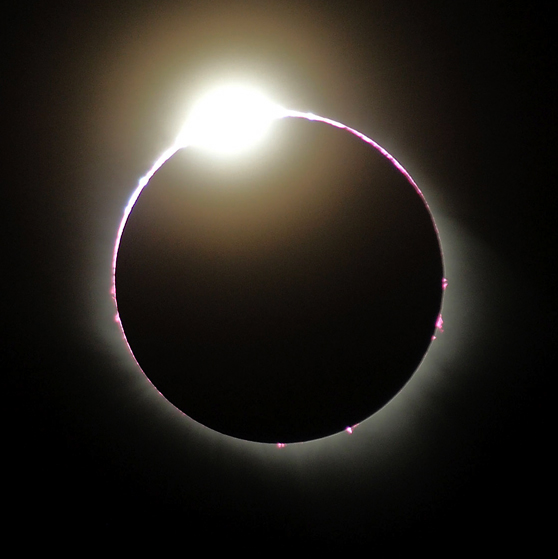 |
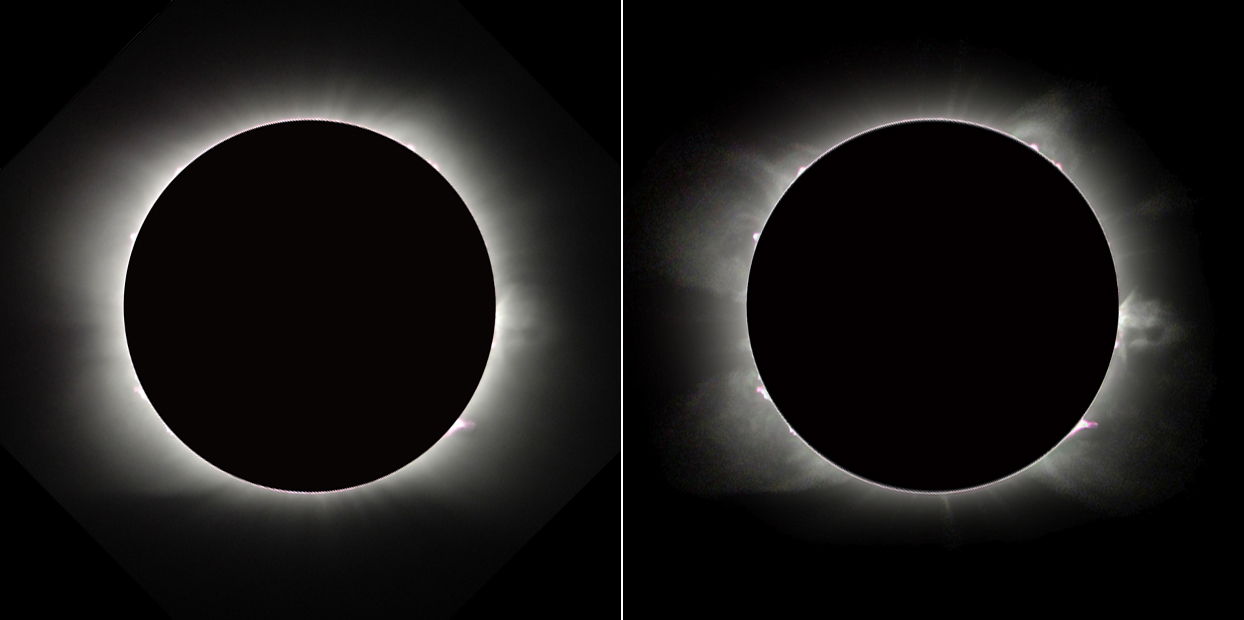


 |
Yet, Another Approach The approach taken here applies iterative/re-entrant (multi-pass), and unequally-weighted, subtractions of azimuthally-restricted heliocentered rotational medians of successive input/output images. At each iteration step azimuthal "integrations" are performed on the re-entered image. These, actually, are not integrations, but numerical medians. For every azimuth angle, in radial "zones" resampled to twice the original pixel scale with sinc-function apodized bicubic interpolation to half an original pixel, an azimuthal median is computed over a restricted range of azimuth angles about every pixel. That angular range is +/- twice the "size" of the largest spatial features to be recovered to a limit of, typically, two resolution elements ifthe image is Nyquist sampled. The iterations begin with the largest spatial scales to be recovered azimuthally, and becoming more restrictive (filtering smaller "features" on successive iterations) guided by the per-pixel S/N in each radial zone. The rotationally-medianed image is then subtracted from the input image after appropriate weighing, so no negative residuals arise on the global (360 degree) azimuthal average at all radii after subtraction. This process, in some sense, is loosely akin to damped radial gradient filtering in combination with unsharp masking, but avoids the pitfalls of artifact creation in both of those methods due to over-aggressive radial and local background gradient subtractions. This method implicitly results in an image which "intelligently" collapses the azimuthally-global radial dynamic range (as "near-perfect" radial gradient filtering would do). More importantly, it rejects (filters) features which have azimuthal spatial scales comparable to those of the sampling noise if (AND ONLY IF) they are correlated over multiple pixel scales (i.e., many resolution elements) in the radial direction, but not so if they are correlated over similar scales in the azimuthal direction. I.e., the filtering has a polar coordinate spatial dependence. Hence, features like very fine strands of the polar "brushes" are removed (the "there is no free lunch" theorem of image processing) - but "fatter" features like coronal loops (e.g., at the "one o'clock position") and the noted 3-o'clock feature remain - with very enhanced visibility. The process is illustrated in the panel to the left progressing through four iteration from the input image input (top) to "final "(bottom). Click HERE or on the images to the left, to view these itrative enhancements to the input image at higher spatial resolution. |
